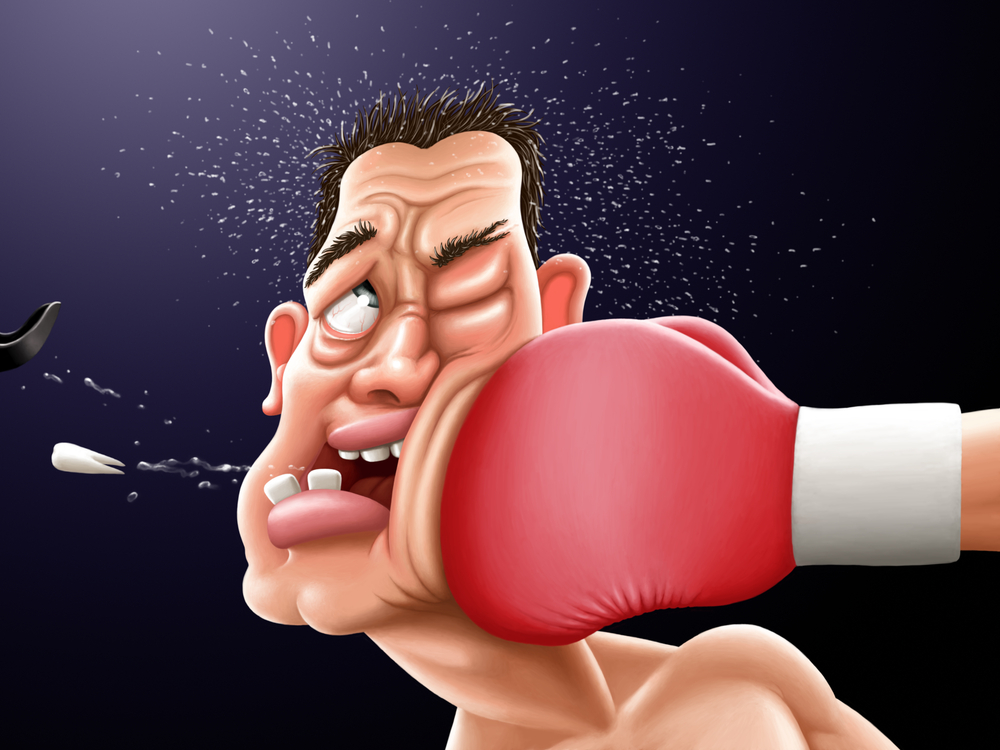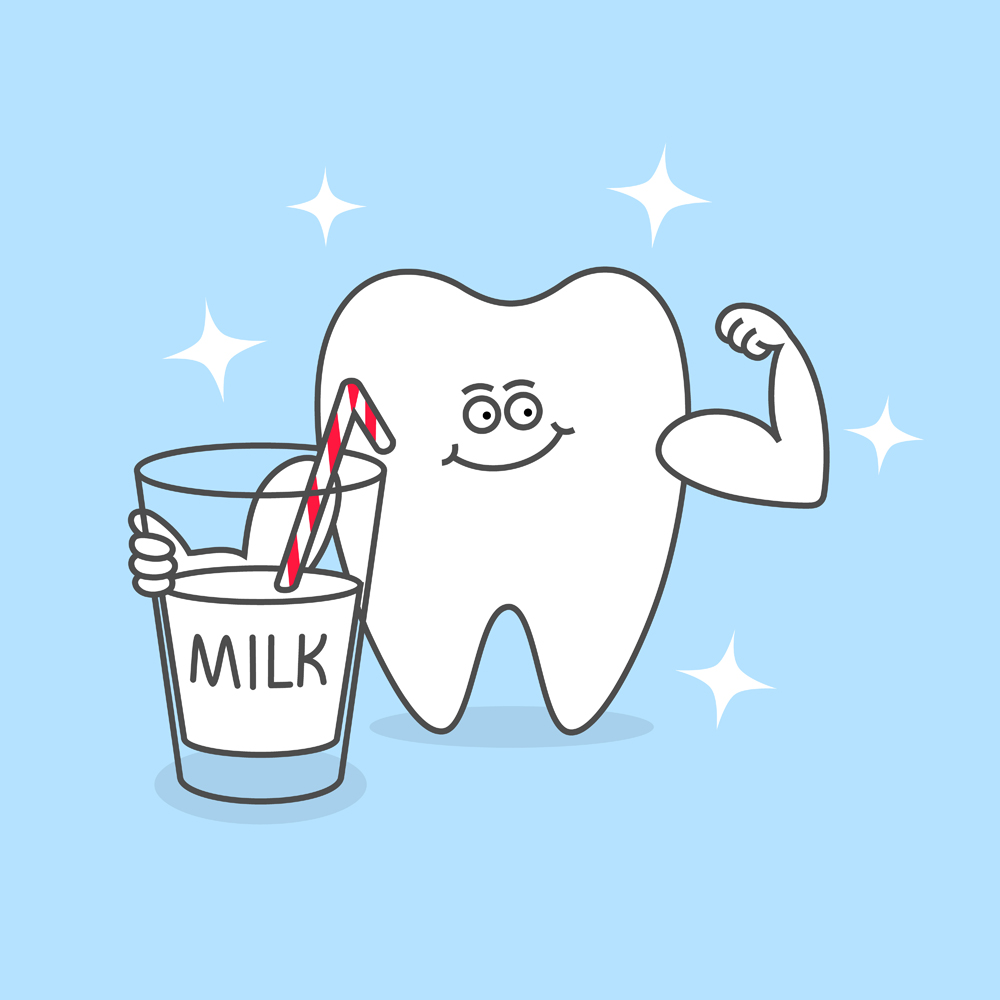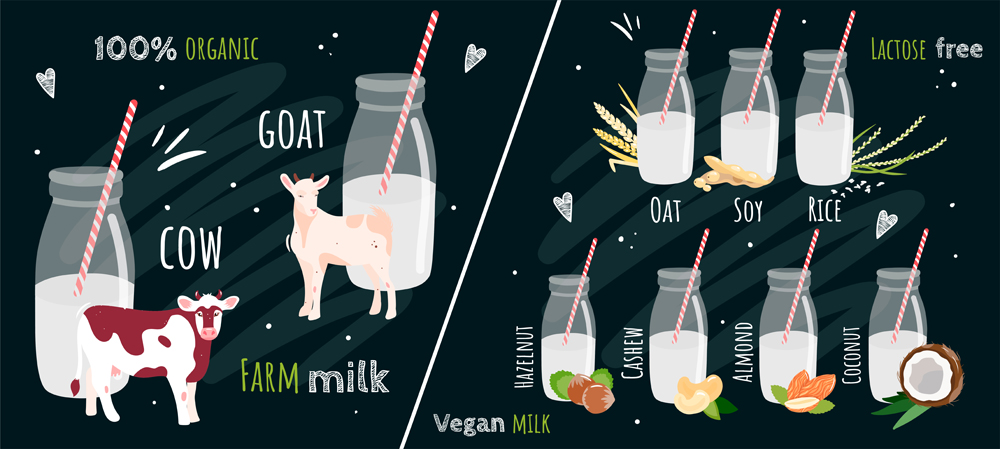Putting a tooth in milk provides the necessary pH and proteins to keep the cells of the tooth root alive.
One day, in the middle of a dodgeball game, imagine a ball plowing into your face, causing you to start bleeding a bit inside your mouth. You check inside your mouth and discover that a tooth has come loose. What do you do?
Should you panic? Should you throw the tooth away?
No, simply put it in some milk!

Well, this figure might surprise you, but there are an estimated 5 million+ teeth knocked out every year. One might get a knocked-out tooth while participating in an active contact sport like football, rugby, wrestling, basketball, snowboarding, skiing, or hockey. You can also get a tooth knocked out through any kind of accident that might directly or indirectly involve the face.
What Should Be The Very First Step When A Tooth Is Avulsed?
“Avulsed” is the technical term for a tooth (or God forbid, teeth) that has been “knocked out”.
First, find the tooth or parts of it. Once you find it, be extremely careful when holding the tooth. A tooth must never be held by its root, so hold the tooth from the upper part (the crown), rather than by the surface that was attached to the gums. You want to prevent any unhygienic particles from transplanting from your finger to the root of the tooth, which might later be attached back to your gum.
If you do find any dust or foreign substance on your knocked-out piece of calcium phosphate, simply wash it carefully.
Now, try putting the tooth back in the socket of your mouth, but make sure you put it back from the correct side. If you can’t hold the tooth in place, try using a moist clean cloth to press down on it. Press the tooth into your socket by biting down gently with your jaws.
Placing the tooth back in the socket allows it to be in the environment of its nerves, blood vessels, and the tissues surrounding it so that the cells there don’t reject it as a foreign substance and can begin the process of healing.
Also Read: Why Don’t Teeth Heal Like Skin And Other Body Parts?
What If The Tooth Cannot Be Repositioned Inside The Mouth?
If you can’t manage to put the tooth back in place, your unexpected savior is milk!
Put the tooth in some milk until you reach the nearest dentist. It is the most appropriate medium you can use until a professional can get involved.
Why not water? Well, even though the tooth itself is a non-living body, the cells that attach it to the gums are alive. Thus, when you place these living cells in water, the cells take it in (due to osmosis, since the cell has a lower concentration of water inside it than its watery surroundings), swell up and will eventually burst.
Milk, on the other hand, has been found to contain the right amount of proteins to maintain the acid-alkali ratio. In addition, milk contains sugars, which are essential to keep the cells of the root alive and maintain their growth. As if this wasn’t enough, our milky savior also has a set of anti-bacterial constituents that will significantly reduce your chances of getting infections. (Source)

It is essential to give the tooth a suitable environment, e.g., the inside of the mouth (repositioning), a glass of milk or even just saliva, in case milk is not available. If one of these strategies is not used, the cells on the outer surface of the root of the tooth might begin to die. Even the cells of the nervous tissue and the connective tissue that were in contact with the tooth start dying once the blood supply is broken. Thus, it becomes a time-sensitive task to reach the dentist after the accident.
It is best to reach a dentist within 15 to 30 minutes of the avulsion, but successful implants can be managed even if it has been an hour. However, after that, it becomes a gamble, as the cells start rejecting the tooth, identifying it as something “foreign”.
Should The Same Procedure Of Repositioning Be Applied To A Child’s Tooth?
The answer is an absolute NO. Repositioning a child’s tooth in their mouth can hamper the growth of the adult tooth growing underneath. So, the best idea is to keep the tooth in a few drops of milk until you can take the child to a dentist. If milk is not available, ask the child to spit in a container and keep the tooth soaking in the child’s saliva.
Also Read: Why Don’t Cuts And Wounds Inside The Mouth Get Infected By Bacteria?
Which Kind Of Milk Is Best?

Assuming easy availability and low cost, cow’s milk is generally encouraged for a tooth bath. It also has the required pH and an absence of artificially added sugars.
A University of Queensland research study has shown that UHT (Ultra-High-Temperature treated) milk was the best alternative to store a tooth as a short-term and precautionary solution in case of emergencies. UHT milk was found to be superior to regular milk, as it can be kept for longer periods under normal room conditions. However, the discussions and experiments regarding the suitability of other non-dairy kinds of milk, such as almond milk, soy milk, oat milk, and coconut milk, are still being studied.
In conclusion, prevention is better than a cure. With that in mind, the best idea is to prevent any kind of injury from occurring in the first place! People who are actively involved in sports that pose a risk to their smile are advised to always wear mouth guards—the readymade type, the boil-and-bite type, or one custom made by a dentist. However, if an accident involving your tooth still happens, try repositioning the tooth or just keep it soaking in milk until you can visit the dentist!
How well do you understand the article above!

References (click to expand)
- Knocked Out Teeth - American Association of Endodontists. The American Association of Endodontists
- UHT milk best practical way to store knocked-out teeth. The University of Queensland
- Knocked out teeth - Oral Health Foundation. The Oral Health Foundation was formed in 1971 and
- Knocked-out tooth - NHS. The National Health Service
- Hamid, A., & Carter, A. (2021, March). Tooth avulsion: does the milk matter?. British Dental Journal. Springer Science and Business Media LLC.
- Adnan, S., Lone, M. M., Khan, F. R., Hussain, S. M., & Nagi, S. E. (2018, February 6). Which is the most recommended medium for the storage and transport of avulsed teeth? A systematic review. Dental Traumatology. Wiley.
